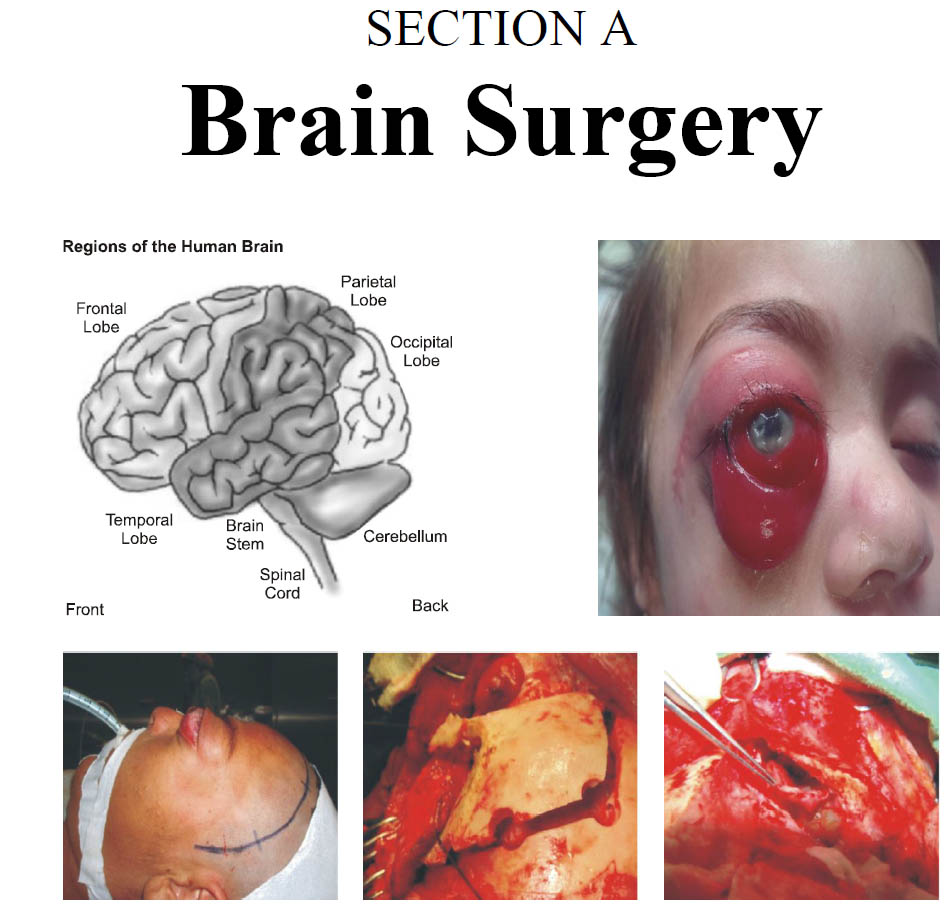Insular Glioma Esoteric Precinct
DOI:
https://doi.org/10.36552/pjns.v24i2.404Keywords:
Insular Glioma, Approaches to insular GliomaAbstract
Background and Objective: The complex insular anatomy and its proximity to eloquent areas make this area almost inaccessible for safe surgical resection of Glioma. Aim of our study is to determine outcome assessment after surgical resection.
Materials & Methods: This was a retrospective analysis of 59 patients over a period of 5 years from July 2013 till June 2018. All patients of insular Glioma were included in our study irrespective of age and sex. Degree of surgical resection, Post-operative neurological deficits and complications were assessed. They were followed in the outpatient department at 3, 6 and 12 months.
Results: Total 59 patients were included 38 (64.40%) male and 21 (35.59%) females. 36 (61%) patients had right sided insular Glioma and 23 (38.98%) have left sided. Seizures were main presentation in 46(77.96%) patients. Trans-sylvian route adopted in 34 (57.6%) patients followed by transcortical route. Near total Resection was Possible in 30 (50.84%) patients and partial in 29 (49.15%) patients. Focal neurological deficits the motor weakness & dysphasia were main post-operative complications in 18 (30.5%) patients. Three (5.08%) patients died. In all grade II and grade III Gliomas no increase in size was discovered on MRI Brain at 6 and 12 months.
Conclusion: Maximum safe resection of insular Glioma with acceptable morbidity is possible with improved overall survival and disease free interval.
References
2. Signorelli, Francesco & Guyotat, Jacques & Elisevich, Kost & Barbagallo, Giuseppe. Review of current microsurgical management of insular gliomas. Actaneurochirurgica. 2009; 152. 19-26.
10.1007/s00701-009-0450-y.
3. Yasargil MG, Kasdaglis K, Jain KK, et al. Anatomical observations of the subarachnoid cisterns of the brain during surgery. J Neurosurg. 1976; 44: 298–302.
4. Yasargil MG, Krisht AF, Türe U, et al: Microsurgery of insular gliomas: Part I, II, IV. Contemporary Neurosurgery, 1976; 24: (11): 1–8.
5. Benet A, Hervey-Jumper SL, Sánchez JJ, Lawton MT, Berger MS. Surgical assessment of the insula. Part 1: surgical anatomy and morphometric analysis of the trans-sylvian and transcortical approaches to the insula. J Neurosurg. 2016; 124: 469–481.
6. Alimohamadi M, Shirani M, Shariat Moharari R, Pour-Rashidi A, Ketabchi M, Khajavi M. Application of awake craniotomy and intraoperative brain mapping for surgical resection of insular gliomas of the dominant hemisphere. World Neurosurg. 2016; 92: 151–158.
7. Sanai, N., M.Y. Polley, and M.S. Berger, Insular gliomare section: assessment of patient morbidity, survival, and tumor progression. J Neurosurg. 2010; 112 (1): 1-9.
8. Barbosa BJ, Dimostheni A, Teixeira MJ, Tatagiba M, Lepski G. Insular gliomas and the role of intraoperative assistive technologies: results from a volume try-based retrospective cohort. Clin Neurol Neurosurg. 2016; 149: 104–110.
9. Duffau, H. and L. Capelle, Preferential brain locations of low-grade gliomas. Cancer, 2004; 100 (12): 2622-2626.
10. Yasargil, M.G., Tumours of the limbic and paralimbic systems. Acta Neurochir (Wien), 1992; 118 (1-2): 40-52.
11. Ebeling U, Kothbauer K. Circumscribed low grade astrocytomas in the dominant opercular and insular region: a pilot study. Acta Neurochir (Wien). 1995; 132: 66–74.
12. Duffau H, Moritz-Gasser S, Gatignol P. Functional outcome after language mapping for insular World Health Organization Grade II gliomas in the dominant hemisphere: experience with 24 patients. Neurosurg Focus, 27 (2) :E72009.
13. Gravesteijn BY, Keizer ME, Vincent AJPE, Schouten JW, Stolker RJ, Klimek M. Awake craniotomy versus craniotomy under general anesthesia for the surgical treatment of insular glioma: choices and outcomes. Neurol Res. 2018; 40: 87–96.
14. Duffau, H, The insular lobe: physiopathological and surgical considerations. Neurosurg 2000; 47 (4): 801-10.
15. Hervey-Jumper S, & Berger, MS. Insular glioma surgery: an evolution of thought and practice, Journal of Neurosurgery JNS. 2019; 130 (1): 9-16.
16. Vanaclocha, V., N. Saiz-Sapena, and C. Garcia-Casasola, Surgical treatment of insular gliomas. Acta Neurochir (Wien), 1997; 139 (12): 1126-34.
17. Eseonu, Chikezie & Refaey, Karim & Raghuraman, Gugan & Quiñones-Hinojosa, Alfredo. 378 Analysis of Molecular Markers and Volumetric Extent of Resection on Survival for Insular Gliomas. Neurosurgery. 2017; 64: 289-290. 10.1093/neuros/nyx417.378.
18. Przybylowski CJ, Baranoski JF, So VM, Wilson J, Sanai N. Surgical morbidity of transsylvian versus transcortical approaches to insular gliomas. J Neurosurg. 2019; 5:1-8.

Downloads
Published
Issue
Section
License
The work published by PJNS is licensed under a Creative Commons Attribution-NonCommercial 4.0 International (CC BY-NC 4.0). Copyrights on any open access article published by Pakistan Journal of Neurological Surgery are retained by the author(s).












